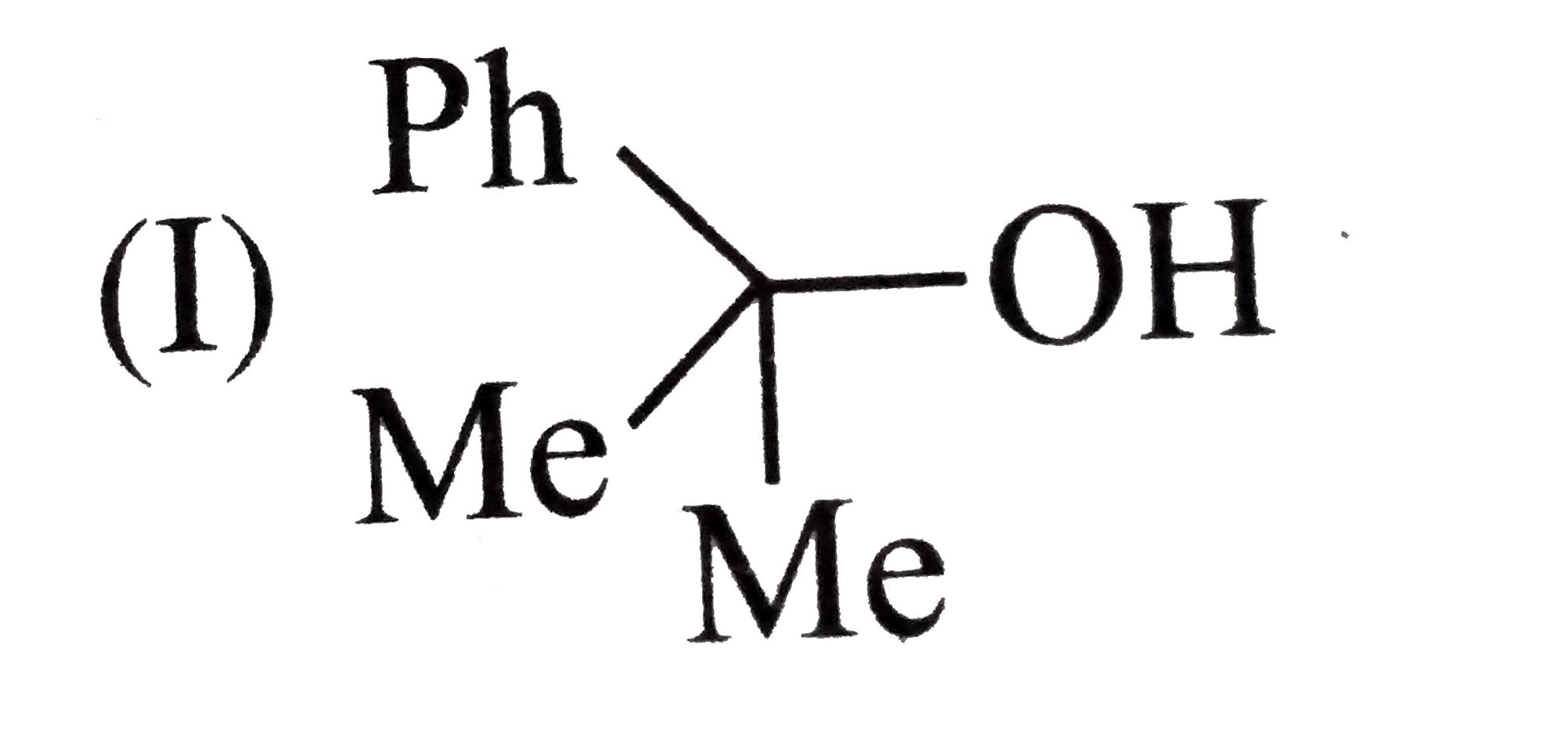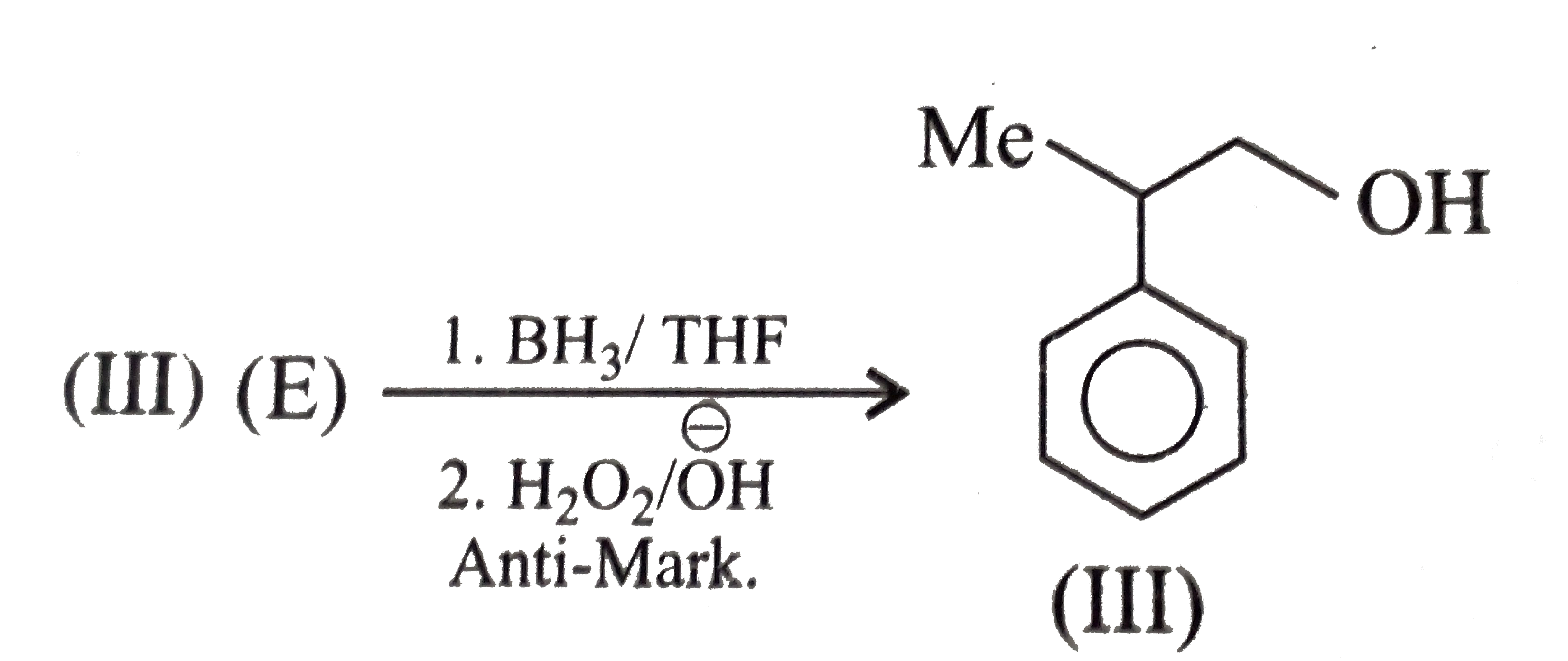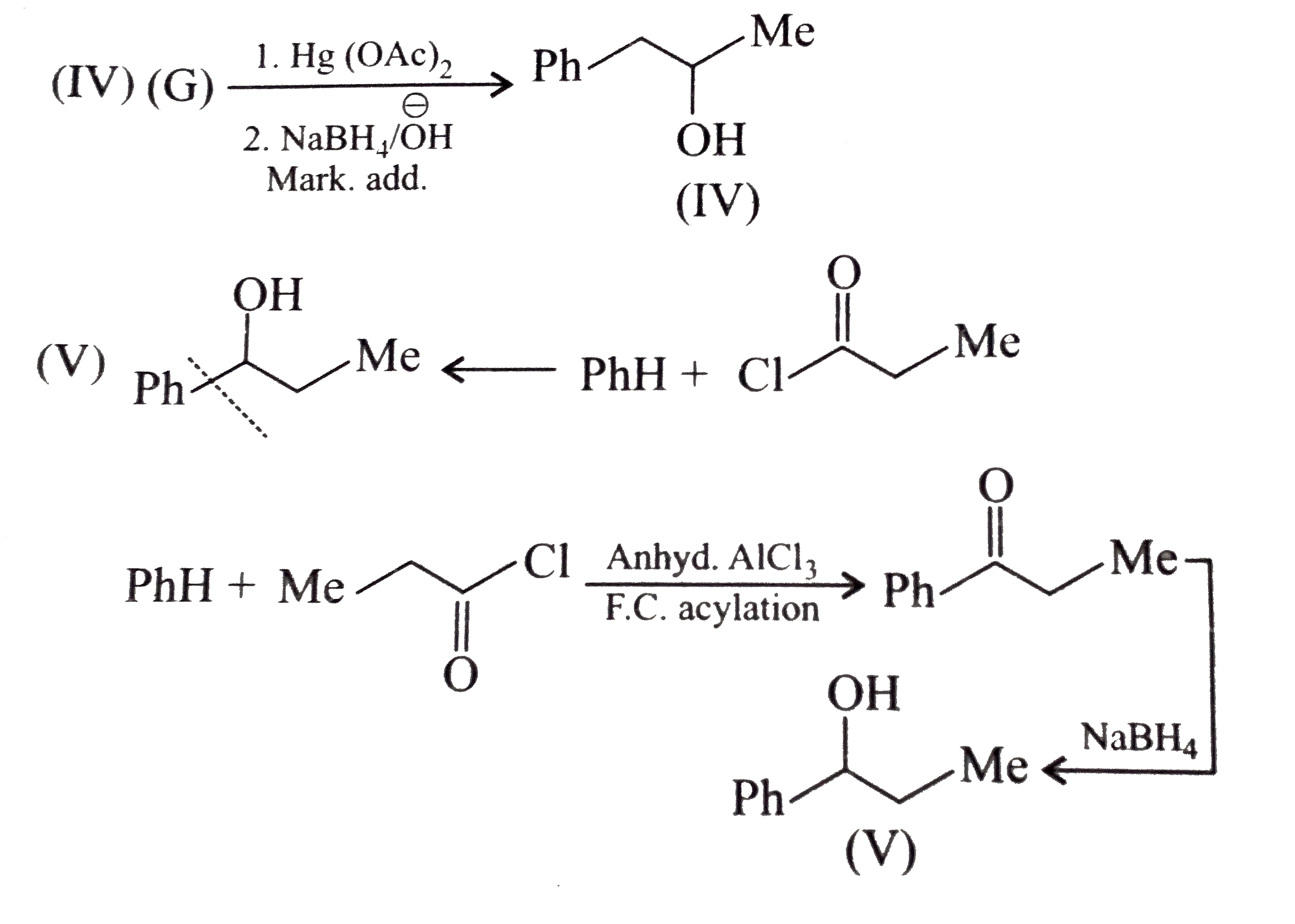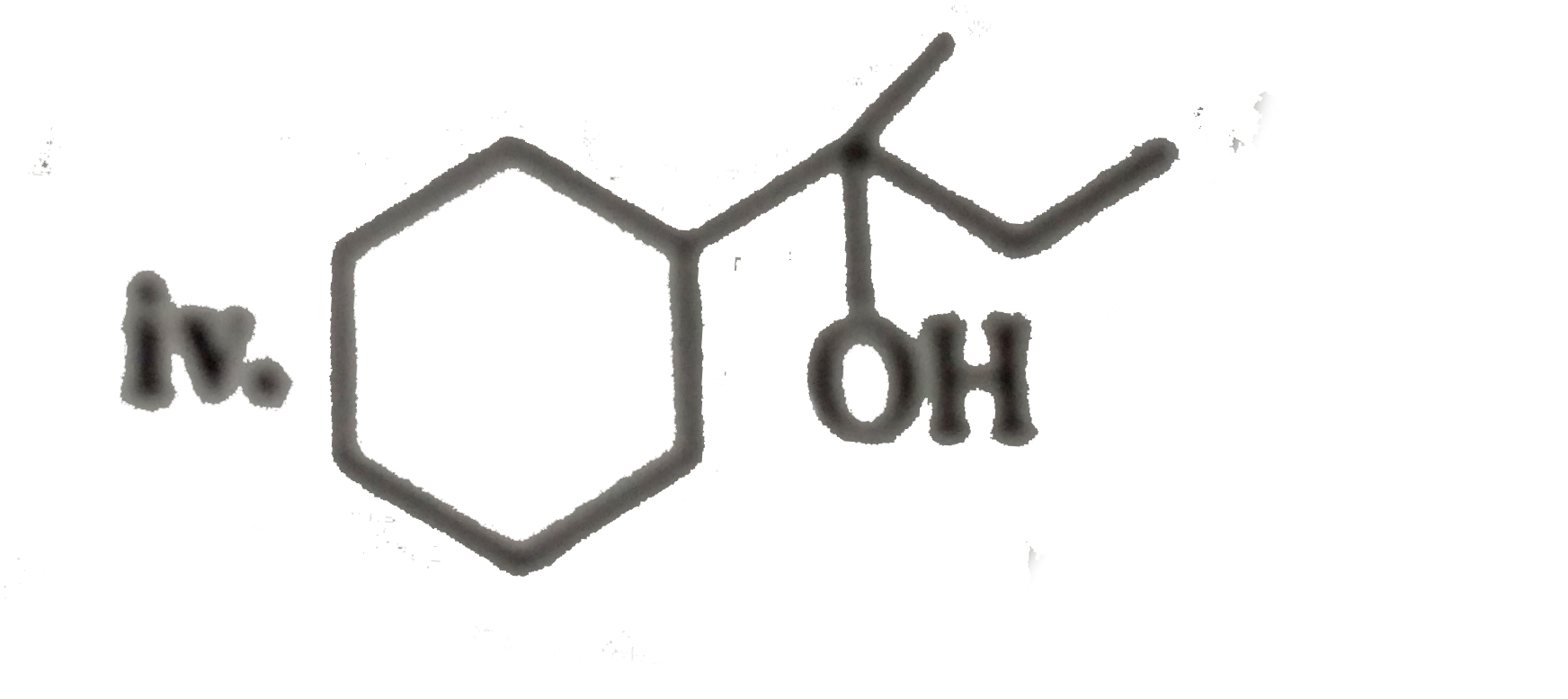Synthesies the following alcohols by using:
a. Grignard reagent (G.R.)
b. Not using G.R. (any other method).
(I)  (II)
(II) 
(III)  (IV)
(IV) 
(V) 
a. Synthesis by using G.R.
(I) 
(II) 
(III) 
(IV) 
(V) 
(b) Synthesis of alcohols without using G.R.
(I) 
(II) 
(III) 
(IV) 
Topper's Solved these Questions
- ALCOHOL,PHENOL AND ETHERSBOOK - CENGAGE CHEMISTRY ENGLISHCHAPTER - ALCOHOL,PHENOL AND ETHERSEXERCISE - Exercises Subjective
25 Videos
- ALCOHOL,PHENOL AND ETHERSBOOK - CENGAGE CHEMISTRY ENGLISHCHAPTER - ALCOHOL,PHENOL AND ETHERSEXERCISE - Exercises Concept Application
33 Videos
- ALCOHOL,PHENOL AND ETHERSBOOK - CENGAGE CHEMISTRY ENGLISHCHAPTER - ALCOHOL,PHENOL AND ETHERSEXERCISE - Archives Analytical And Descriptive
15 Videos
- ALIPHATIC AND AROMATIC ALDEHYDES AND KETONESBOOK - CENGAGE CHEMISTRY ENGLISHCHAPTER - ALIPHATIC AND AROMATIC ALDEHYDES AND KETONESEXERCISE - Archives Subjective
26 Videos
Similar Questions
Knowledge Check
Select the correct order of decreasing reactivity of the following compounds towards the attack of Grignard reagent.
(I) Methyl benzoate (II) Benzaldehyde
(III) BenzoylchlorideAII>III>I>IVBI>II>III>IVCIII>II>IV>IDII>IV>I>IIIIf r≥1, then the sum of infinite G.P. tends to (i) 0 (ii) ∞ (iii) 1 (iv) none of these
A0B∞C1Dnone of these
Show how would you synthesisse the following alcohols form approprite alkenes.
i. ii.
ii. 
iii. iv.
iv. 
View SolutionWhich of the following alkyl halide could be successfully used to synthesize Grignard reagent and why other fail?

View SolutionThe following two compounds I and II can be distinguished by using reagent

View SolutionFind the squares of the following numbers using column method. Verify the result by finding the square using the usual multiplication: (I)25 (ii) 37 (iii) 54 (iv)71 (v) 96
View SolutionExplain the mechanism of the following reactions :
(i) Addition of Grignard reagent to a carbonyl compound forming an adduct followed by hydrolysis.
(ii) Acid catalysed dehydration of alcohol forming an alkene.
View SolutionWhich one of the following will have the largest number of atoms?
(i) 1 g Au (s)
(ii) 1 g Na (s)
(iii) 1 g Li (s)
(iv) 1 g of Cl2(g)
View Solution
